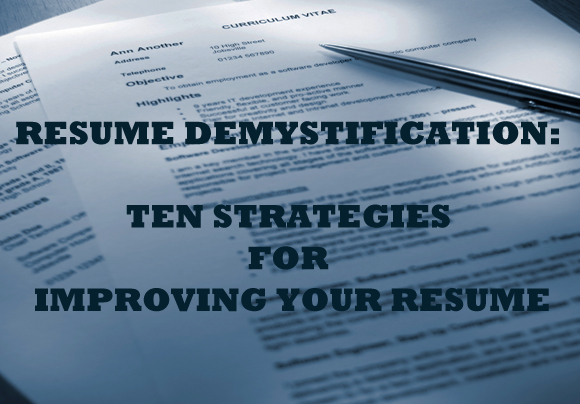


So, here are my tips for creating an informative resume that will hopefully help land you an interview, and ideally, your next job:
Tell me what you accomplished, not what you were responsible for. It’s helpful to know if you were responsible for leading a staff of ten across a variety of functions. But what did you do with that staff? For instance, if you’re a professional fundraiser, how much did you raise on an annual basis? How much did you increase contributed revenue from year to year (or over a certain time period)? How many donors did you actively cultivate in a given year? Also, use dollar amounts when talking about increases; percentages are nice, but can be misleading. Example: Increased contributed revenue 50% from 2012 to 2013. That sounds impressive, but it’s different if you started at $100 versus $10 million.
2. Be concise.
A resume is intended to quickly convey what you’ve accomplished in your career. The best way to do that is not through narrative, but bullet points. Your resume should not be a short story. Please don’t fill the page with paragraphs of dense text. A short sentence or two followed by a bulleted list of what you’ve achieved will get me to read your resume without dreading the task ahead of me.
3. Don’t obsess about the two page rule.
I’m not sure who came up with this, but I have no idea how someone with a 20 year career can really tell me what they’ve accomplished in only two pages. If you have to shrink the font to anything less than 10 point, or reduce the margins so much that Word questions me when I click print, chances are you should just add another page. That said, I don’t really want to see a ten page resume, either, unless you are submitting a full academic curriculum vitae, and those are only necessary for certain types of jobs. Also, if you’re fresh out of college, don’t pad your resume to make it seem like you’ve done more than you have; if you’re early in your career, short can be informative.
4. Flashy design does not make up for a lack of content.
I appreciate a well-designed and formatted document as much as anyone. My colleagues might tell you that I’m overly picky about formatting sometimes. But unless you’re applying for a design job, I need more than a pretty layout (in fact, I need that even if you are applying for a design job).
5. Please use a chronological format!
Plain and simple, functional resumes are hard to follow. I want to know what you did and where you did it. Functional resumes force me to have to guess and search for information. Don’t make your reader work so hard; if your resume is one in a stack of 25, they may choose not to. Also, please include the month and year when you started and left each position.
6. Eliminate unnecessary information.
For me, this includes an “objective” statement at the top of your resume. It’s safe to assume if you’re applying for a position, your objective is to be hired for it. Statements such as “Procure a management level position that will allow me to grow and contribute to a company’s mission” don’t tell me anything. Use the extra space to tell me something you’ve accomplished. Also unnecessary are the ubiquitous “references available upon request” (of course they are, and you shouldn’t provide them until they’re asked for), lists of hobbies (unless somehow directly related to the position you’re applying for), and pictures.
7. It’s okay to truncate some information.
Particularly if you have a long career, you may not need to include a lot of information for the positions you held early on. If you’ve been lucky enough to be promoted through various positions with one organization, spend the most space detailing what you accomplished in the most senior role. I want to see your career progression, but may not need every detail about work you did 20 years ago.
8. If you’re looking to change sectors, highlight translatable skills.
This is especially key if you’re looking to move from the corporate world to the nonprofit sector. Include information about organizations you’re involved with as a volunteer, especially if you’re a board member or part of any critical committees (finance, development, executive).
9. Make sure your resume and LinkedIn profile match.
Odds are, at some point, I will see your LinkedIn profile, and I will notice if there are any discrepancies between the two. It’s a big red flag. Also, it’s a huge asset to include the same information on your resume in your LinkedIn profile. Many people see you on LinkedIn before they see your resume, so you should be sure to detail your experience there. You wouldn’t send out a resume with just a list of job titles and organizations, so why do it on LinkedIn? If you do, it will mean you often get overlooked.
10. Bonus! Cover Letters!
I can be hit and miss on the value of a cover letter. But I do find them helpful in certain circumstances. If you’re looking to change sectors – whether from corporate to nonprofit, or healthcare to the arts – use your cover letter to tell me why you want to do that. What about this position, or this organization, really interests you? And how do your skills match the position criteria? That said, keep it concise. If your letter is more than a page and a half, you might be telling me too much. Say just enough to catch my interest, and help me see why you might fit, but leave enough so that I have questions to ask when you interview.
So there you have it – ten strategies that, based on my experience, are critical to developing your resume. What other strategies do you find effective? Leave me a note below.